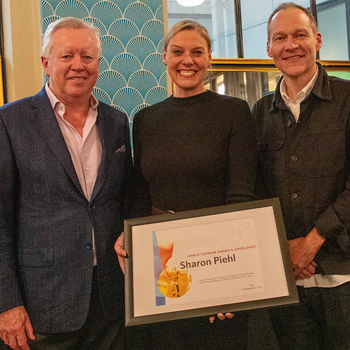For the Love of Coco Pops
Target audience! Target audience! Target audience! Words we use loosely yet rarely understand.
Over the last few years it has become increasingly evident that the consumer is holding all the cards and communication agencies are left waiting for them to make their next move. Based on previous research Why Generation Y? we know we are dealing with a market that loves Coco Pops today, hates it tomorrow and can’t live without it by Sunday. How then do we define our target audience when it’s constantly in flux? And even more importantly, effectively communicate with them to successfully achieve our client’s objectives?
All too often we fall back in to our comfort zone and develop stock standard marketing strategies from out-dated formulas, one of which is LSMs (Living Standard Measurements). LSMs developed by SAARF (South Africa Audience Research Foundation) have become the most widely used marketing research tool in Southern Africa. The SAARF LSM is a unique means of segmenting the South African market by dividing the population into 10 LSM groups, 10 being the highest and 1 the lowest. It groups people according to their living standards using criteria such as degree of urbanisation and ownership of cars and major appliances.
A LSM is found on every advertising rate card. Whether it’s for magazines, newspapers, online sites, TV or radio – all these mediums classify their audiences based on whether they drive a car, have running water, own a washing machine or a satellite dish. Is this really the best means of defining our target audience? Perhaps not! Take the Khayelitsha informal settlement as an example. At first glance one would classify the residents within the lower end of the LSM spectrum, however on closer inspection majority of the families have a satellite subscription, own a home telephone and have access to electricity – for me this blurs the lines of LSM classification and cannot be seen as a true reflection. Consumers can no longer be moulded into statistical categories.
An interesting concept currently challenging this consumer classification is ‘Tribal Marketing’ which introduces a new way of consumer engagement and segmentation. Tribal Marketing is defined as the ‘truest expression of one’s self’ combining who individuals think they are with the groups they choose to belong to.
Question is can we really communicate with consumers in the same way as they define themselves?
According to Knowledge Resources ‘YES WE CAN!’ To do so, these four questions should always be your starting point:
- Who are the Tribal Influencers?
Once your tribes have been established, you need to understand their tribal influences. In other words, who they listen to, who they trust and who they share common interests with. - Where can they be found?
It is also crucial to understand where your tribes and more specifically your tribal influencers are communicating and sharing common goals. This is best understood in the digital space but happens similarly in the real world. Social media, blogs, forums and other online communities often come into play, but the possibility exists to create new spaces for your consumers to interact with. - What language do they speak?
This refers to ‘lingos’ or tribal linguistics. Bikers, for example, have their own codes and language which an outsider may struggle to connect with or understand. To really connect to your tribes you need to speak a language they are familiar and comfortable with. - How will we communicate with them?
Understanding the above provides you with a platform for the brand and the brand needs to start connecting to these tribes. It is no longer only about communicating with them in terms of the brand or product, but rather in terms of the value your communication adds to either the tribal influencer or to the tribe specifically. We do not tell them about the brand, we intertwine the brand into their conversational threads, subtly but regularly.
Out with the old and in with the new! So before jumping in to your next marketing campaign, challenge yourself by re-defining the old with the new.
Written by Natalie Themistocleous
Find Out More
-
Digital Insights Bulletin - October 2024
October 31, 2024
-
Sharon Piehl Wins 32nd Annual John D. Graham Award for Excellence
October 25, 2024
-
Digital Insights Bulletin - September 2024
September 30, 2024


